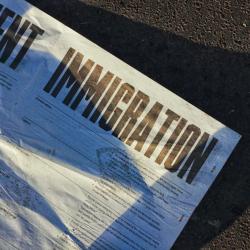Who's Liable After an ATV Accident?
All-terrain vehicles (ATVs) have become increasingly popular for both recreational and work-related activities. These versatile vehicles offer thrilling experiences and practical utility, but they also come with significant risks. Understanding liability in the event of an ATV accident is crucial for anyone who owns, operates, or encounters these vehicles. This article aims to provide a comprehensive overview of who may be held liable after an ATV accident, exploring various scenarios and legal principles.
Understanding ATV Accidents
ATVs are motorized vehicles designed for off-road use, typically featuring four large tires and handlebars for steering. They are used in a variety of settings, from rugged outdoor trails to agricultural fields. Despite their utility and enjoyment, ATVs are involved in numerous accidents each year, leading to serious injuries and fatalities. Common causes of ATV accidents include operator error, mechanical failure, environmental factors, and third-party negligence.
Determining Liability in ATV Accidents
Liability in ATV accidents can be complex, involving multiple parties and legal concepts. Generally, liability is determined based on negligence, product liability, and premises liability. Negligence occurs when a party fails to exercise reasonable care, leading to an accident. Product liability involves holding manufacturers accountable for defective products, while premises liability pertains to the responsibility of property owners to maintain safe conditions.
Operator Liability
The operator of an ATV has significant responsibilities to ensure their own safety and the safety of others. When an operator acts recklessly, lacks proper training, or violates ATV laws and regulations, they can be held liable for any resulting accidents. Common scenarios where the operator is liable include reckless driving, inexperience, and failure to adhere to safety guidelines. For instance, operating an ATV under the influence of alcohol or drugs is a clear example of operator negligence.
Manufacturer Liability
Manufacturers play a crucial role in ensuring the safety of ATVs. When an accident occurs due to a defect in the vehicle, the manufacturer can be held liable under product liability laws. Common defects that lead to accidents include design flaws, manufacturing errors, and failure to provide adequate warnings or instructions. Victims of such accidents can pursue legal action against the manufacturer to seek compensation for their injuries and damages.
Property Owner Liability
Property owners have a duty to maintain safe conditions on their land, especially if they permit ATV use. If an accident occurs due to unsafe terrain, hidden obstacles, or other hazardous conditions, the property owner may be held liable under premises liability laws. This is particularly relevant in cases where the property owner knew or should have known about the dangers but failed to take appropriate measures to mitigate them.
Third-Party Liability
In some cases, third parties may be responsible for an ATV accident. This can include other ATV riders, pedestrians, or even vehicle drivers who may have contributed to the accident through their actions. For example, if another ATV rider was driving recklessly and caused a collision, they could be held liable for the resulting damages. Similarly, if a pedestrian or bystander acted negligently, such as by walking into the path of an ATV, they could also be held responsible.
Comparative and Contributory Negligence
The concepts of comparative and contributory negligence play a significant role in determining liability and compensation in ATV accidents. Comparative negligence allows for the distribution of fault among multiple parties, meaning that an injured party's compensation may be reduced by their percentage of fault. For example, if an ATV operator is found to be 30% at fault for an accident, their compensation may be reduced by 30%.
Contributory negligence, on the other hand, is a stricter standard. In jurisdictions that follow contributory negligence laws, if the injured party is found to be even slightly at fault for the accident, they may be barred from recovering any compensation. Understanding these concepts is crucial for evaluating potential legal outcomes.
Steps to Take After an ATV Accident
Taking the right steps immediately after an ATV accident can significantly impact the outcome of any legal claims. First and foremost, ensure the safety of all involved parties and seek medical attention for any injuries. Documenting the accident scene is also essential. This includes taking photographs, gathering witness statements, and noting any relevant details such as weather conditions or visible hazards.
Reporting the accident to law enforcement and insurance companies is another critical step. An official police report can serve as valuable evidence in any subsequent legal proceedings. Additionally, notifying your insurance company promptly can help facilitate the claims process and ensure that you receive any benefits to which you are entitled.
Legal Options for Victims
Victims of ATV accidents have several legal options for seeking compensation. Filing a personal injury claim is one of the most common avenues. This involves pursuing compensation from the at-fault party for damages such as medical expenses, lost wages, and pain and suffering. In some cases, victims may also be able to recover compensation through their own insurance policies, depending on the coverage.
Understanding the potential damages recoverable is essential for evaluating the worth of a claim. Medical expenses can include costs for emergency care, surgeries, rehabilitation, and ongoing treatments. Lost wages cover the income lost due to the inability to work, while pain and suffering account for the physical and emotional distress caused by the accident.
Conclusion
Understanding who is liable after an ATV accident is crucial for navigating the complexities of legal claims and ensuring fair compensation for victims. Whether the fault lies with the operator, manufacturer, property owner, or a third party, identifying the responsible party is the first step towards justice. By taking immediate action after an accident and exploring all legal options, victims can better protect their rights and secure the compensation they deserve.
More to Read:
Previous Posts:
Next Posts:



